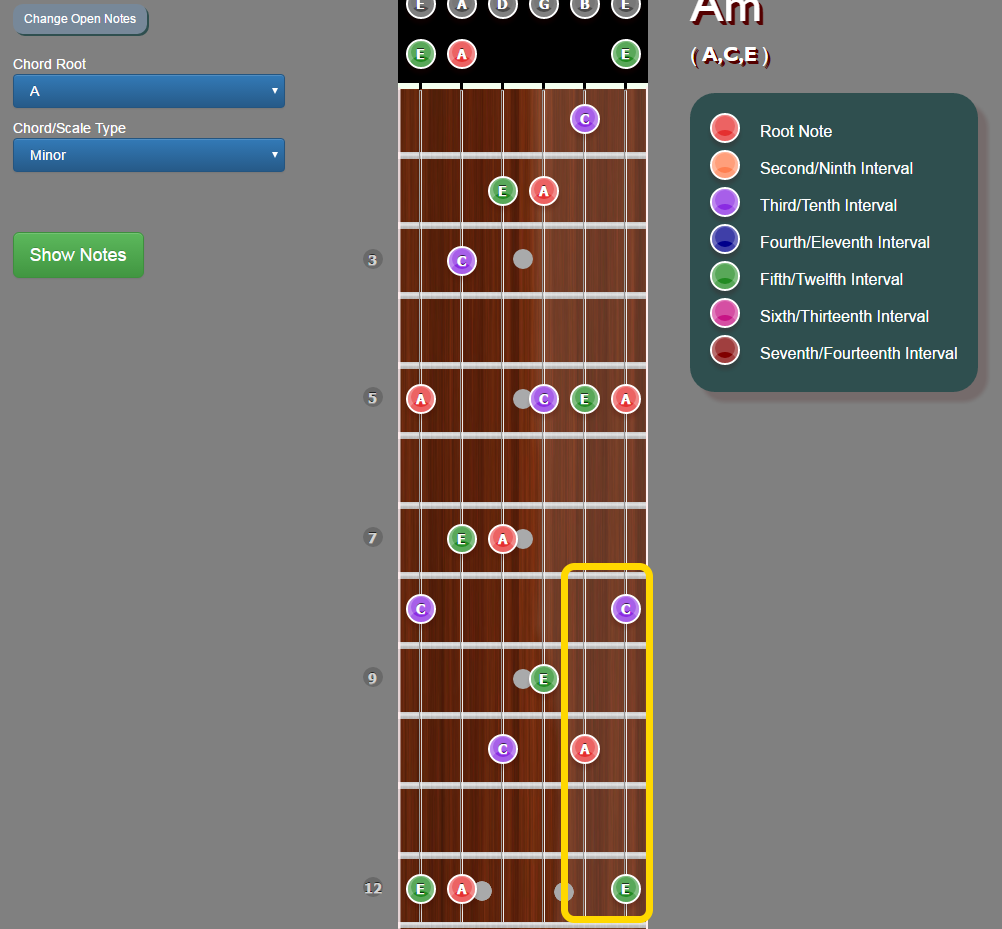Documentation on how to use Find Notes On Fretboard.
Find Notes On (the) Fretboard displays notes/chords/scales all over the fretboard.
When you first open the application, it looks similar to this.
Notice the current guitar root notes on top left, as well as the top of the fretboard
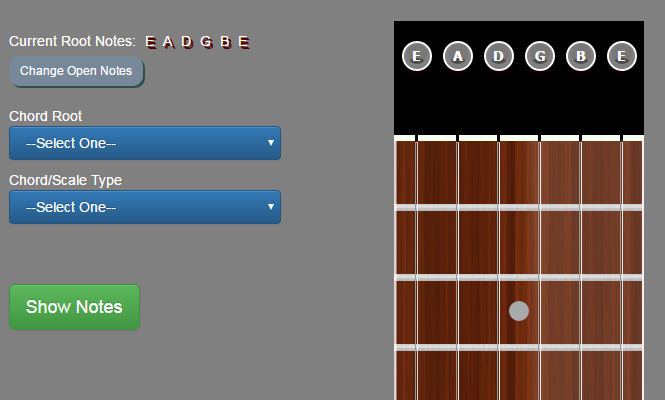
First select a Root Note for your note,chord or scale:
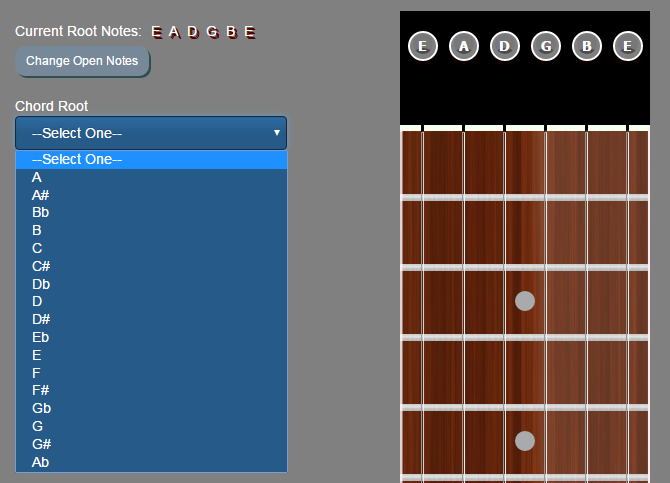
Next, select any scale or chord type from the second list
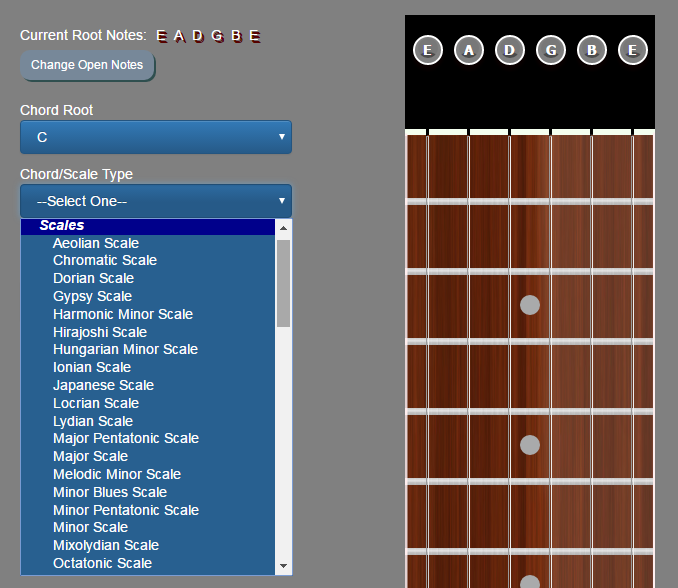
The chord types are listed below the scales in the second list. NOTE is located ibn

The notes will be displayed on the fretboard.
On the right side, the root note, scale/chord name, notes of the selected chord/scale are displayed on the top.
The image below shows the C Major Scale. The notes are displayed under the chord name.
Below the Chord/Scale name and notes is the legend (color guide) that is used to display the notes.
Using the legend, we see the 5th interval (green) in this example is "G". All G notes are colored green.
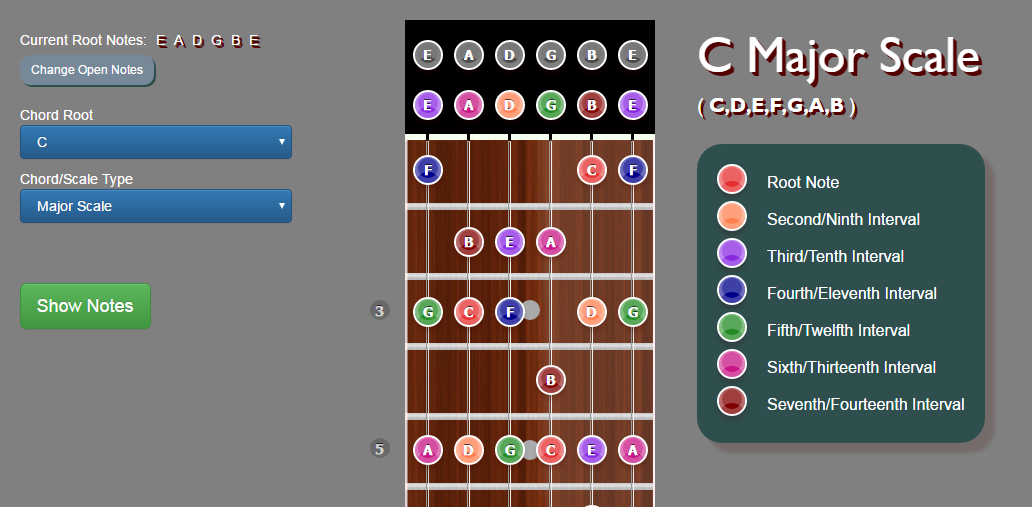
Taking into account that not all players play in standard tuning (EADGBe), Find Notes has the option to change the guitar's root notes.
To engage this option, click the "Change Open Notes" button.
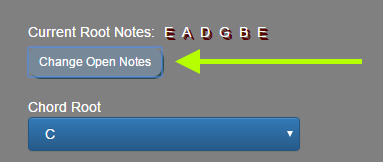
Clicking the "Change Open Notes" button displays lists for each string. You can change each string to any note that you like.
In case you always have your guitar in a non-standard tuning, there is an option to save the current tuning as your default tuning. This requires cookies to save your settings on your device to work.
After you selected the strings you want, click the "Show Notes" button. This will change the root notes and display the notes on the new tuning. If you clicked the checkbox "Make this my default string notes", it will save a cookie to your device.
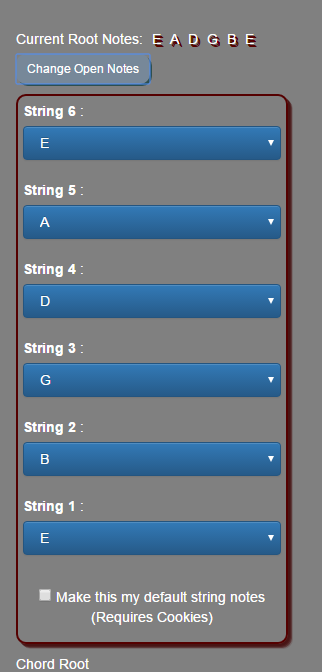
If you decided to change your default tuning (in this example I changed the low E to D), the next time you visit the page, your default tuning will be displayed when the page loads. To change it back, change the strings back to EADGBe and make this your default again.
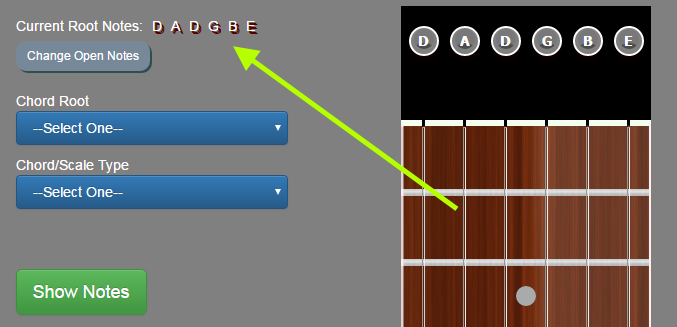
In this tutorial, we use the standard open E chord, which is one of the first chords that every guitarist learns.
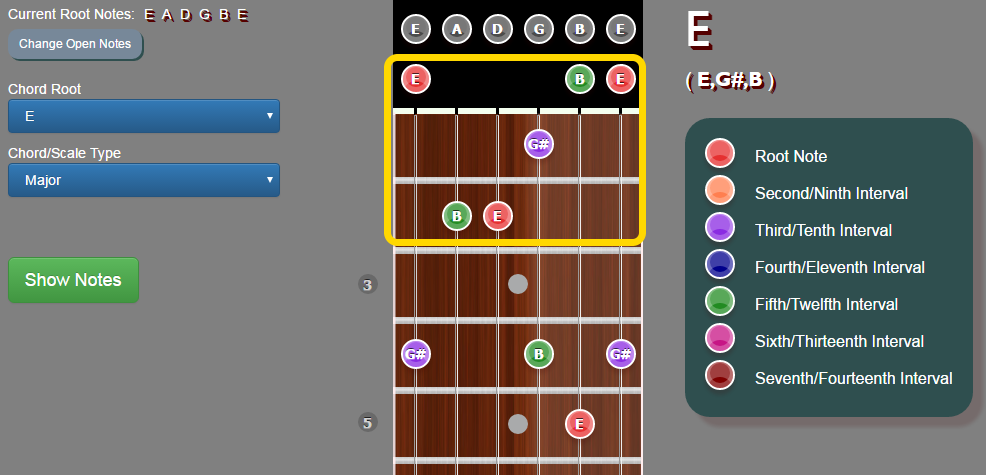
By using the fretboard display, we can use any combination of notes that make up an E chord, which is displayed on the top right of the fretboard (E, G#, B).
In the example below, we use :
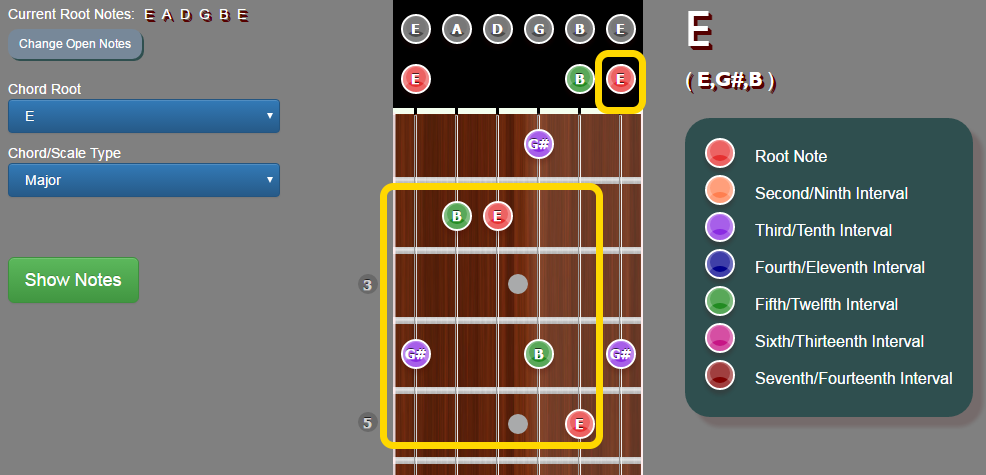
An arpeggio is simply okaying the notes of a chord in succession (one at a time) instead of simultaneously.
Finding arpeggios is extremely easy use Find Chords.
First pick a progression you want to play over. For this example, we're going to choose a very common one: Am F G
There are a bunch of famous songs that use this progression
To name just a few:
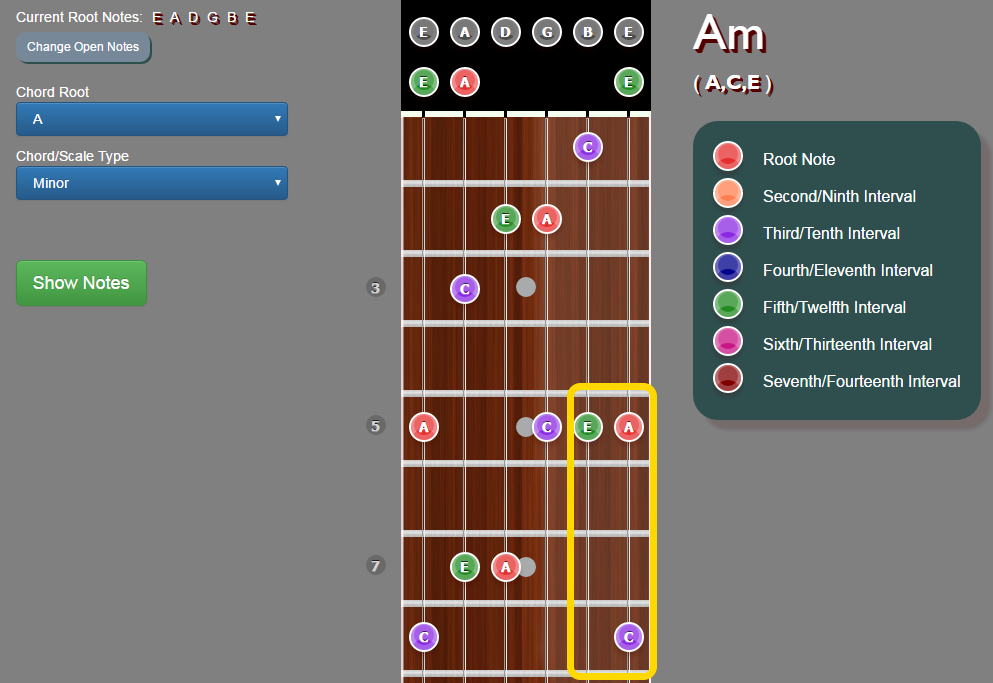
Next, we do the same thing for an F major chord. Notice that we can keep our hand in the same position, and change one note (E to F) to make an F arpeggio.
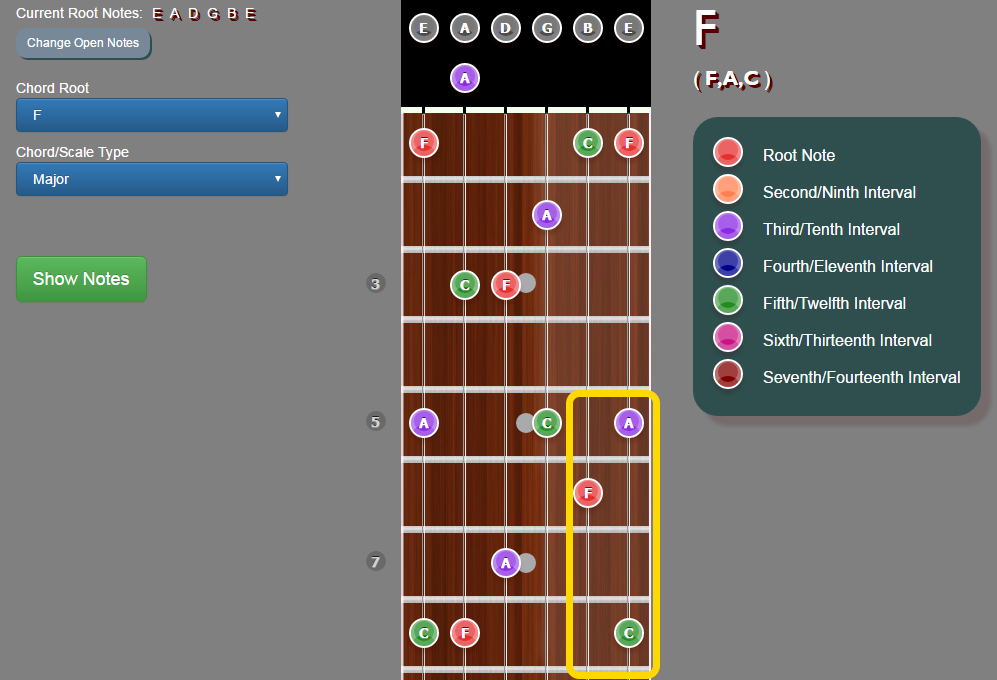
We now find an arpeggio for G major, which is the exact same shape as the F arpeggio, up a full step (2 frets).
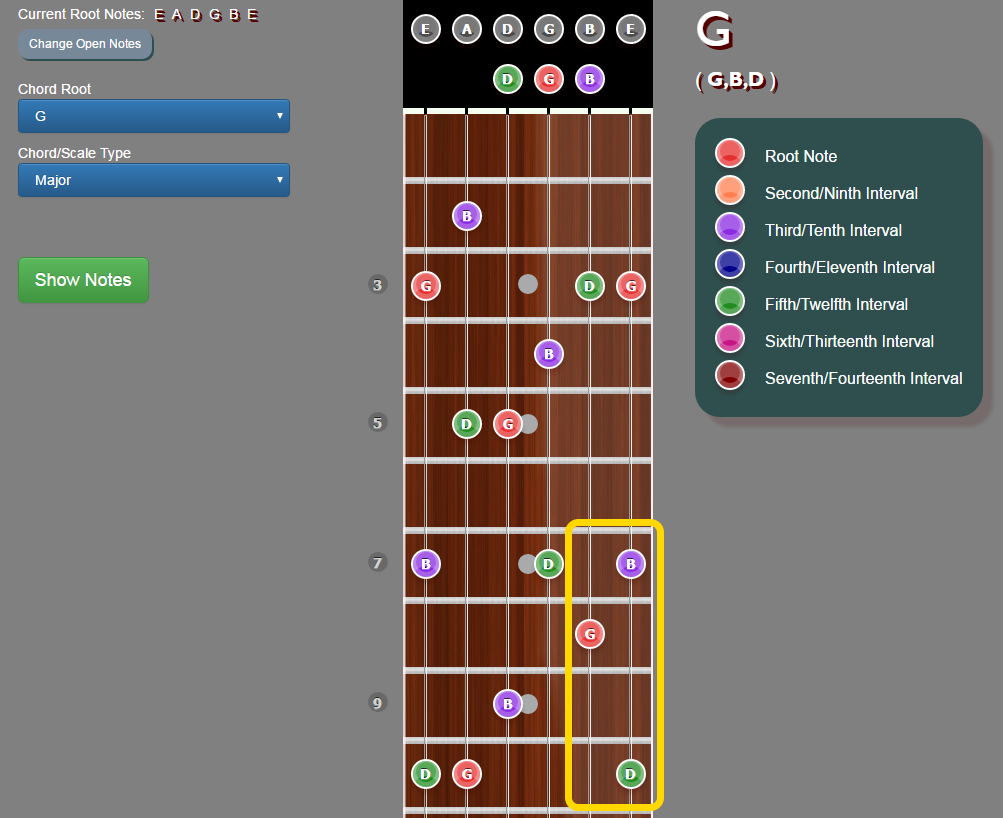
Finally we can resolve the phrase back to the A minor. But instead of just going back to the original 3 note arpeggio, we can find another one. It will sound a little more interesting.
